Speaking of Nature: The bird that surprised me: Brown Creeper uncommon for most of year, expertly camoflauges among dead trees
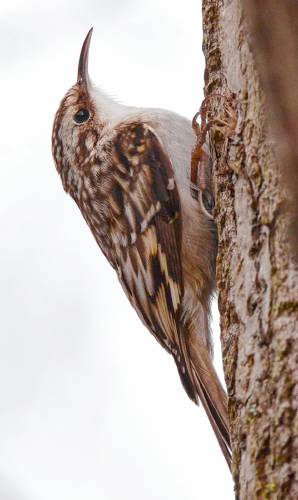
This profile of a Brown Creeper tells the story of this species. The color and pattern of the feathers allow it to blend in with the bark of a tree almost perfectly. Also note the exaggerated size of the claws on the bird's feet, which allow it to skitter up the trunks of trees with ease. PHOTO BY BILL DANIELSON
| Published: 03-05-2024 1:20 PM |
It was the end of a very long day, but, because of the increasing daylight that we have all been enjoying, it was still light out when I got home. I pulled up to the garage, but I had to get out to open the garage door because my door opener had died. I can’t figure out why this piece of electronics failed, but I suspect that an unauthorized rodent got into the housing and shorted it out. Low grumble follows.
This is important, however, because it was the act of exiting my car that alerted me to a movement that struck me as odd. There are two eastern cottonwood trees that grow on the edge of my driveway opposite my garage and out of the corner of my eye I saw something pass from the larger tree to the smaller one. The unknown object was only about four feet off the ground and it was small and light in color. Had there been any wind I would have dismissed it as a leaf, but there was no wind that afternoon. So what had I just seen?
I turned my full attention to the lesser cottonwood and in short order I saw that I was looking at a bird of some sort. It took my tired brain an extra moment to analyze the image that my eyes had locked on to and in that extra moment I became transfixed on what I was seeing. It was a Brown Creeper and I simply couldn’t believe it. This was the first time that I had seen one of these birds in years and I didn’t have my camera. I was paralyzed with indecision.
It took me about 5 seconds to make up my mind and in a situation like this one that seems like an eternity. My camera was in the house, which meant that I would have to break contact with the bird, unlock the door, dash inside and then come back out. A bird like this Brown Creeper could disappear in the 15 seconds that camera retrieval would require, which might result in no photo. On the other hand, I was guaranteed to get no photo if I didn’t have my camera. So … I went for it.
By the time I returned to the driveway it appeared as though the bird had moved on. I glanced toward the stand of white pines by the road, but saw nothing there. I glanced at the larger of the cottonwood trees, but again saw nothing. Disappointed, I took a couple extra steps toward the lesser cottonwood and then all of a sudden a piece of tree bark came to life and moved up the trunk. The little bird had been right in front of me at eye level, but it had remained motionless and had been effectively invisible.
Uttering a hushed curse, I froze. The creeper had moved up and around to the opposite side of the trunk, but that didn’t mean that it had vanished. Would the bird show itself again if I took a turn remaining totally still? In short order I found that the answer to that question was yes. The creeper was in the mood to just rest on the trunk and it popped out on the other side again. I had to cautiously reposition myself to get a clear shot of the bird, but once the camera locked on to the target I fired off about 50 shots. The one I share with you today was the best of the bunch.
The Brown Creeper is a permanent resident in our region, but the Massachusetts Audubon Society identifies it as uncommon for most of the year. This species prefers older forests with large live trees upon which it can forage. It enjoys the same basic diet as a White-breasted Nuthatch (Sittacarolinensis), but its foraging technique is different. Where a nuthatch will move down the trunk of a tree, a creeper will move upwards. As it moves it searches for insects, spiders and spider eggs that are hidden in the nooks and crannies of the bark and then tweezes these items out of their hiding places with its long, slender, curved beak. Creepers will move their way up large trees and then fly down to the base of another tree and start the upward journey all over again. This behavior may be the only reason that people ever see this species.
In mature forests, where the bird hunts for food on living trees, the Brown Creeper also requires the presence of dead trees that have started to lose their bark. It is in between the loose bark and the exposed wood on the trunks of these dead trees that the creepers will build their nests. I have only seen two Brown Creeper nests in my entire life and in both cases it was the product of the purest luck that I found them. Imagine a bird that is so fantastically camouflaged that it can disappear by simply staying still. Now imagine that this bird likes to nest under the bark of a tree that it so perfectly matches in color and pattern. Not easy at all.
Article continues after...
Yesterday's Most Read Articles
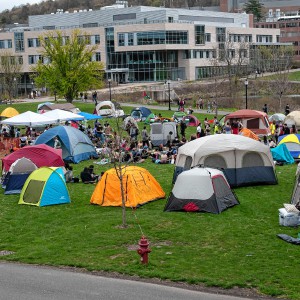 Pro-Palestinian protesters set up encampment at UMass flagship, joining growing national movement
Pro-Palestinian protesters set up encampment at UMass flagship, joining growing national movement
 Island superintendent picked to lead Amherst-Pelham region schools
Island superintendent picked to lead Amherst-Pelham region schools
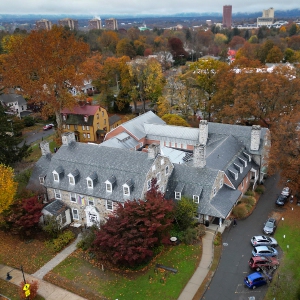 Sole over-budget bid could doom Jones Library expansion project
Sole over-budget bid could doom Jones Library expansion project
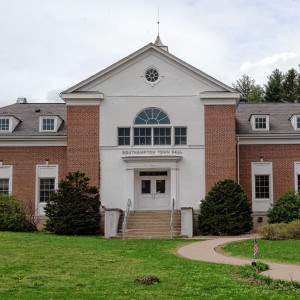 State fines Southampton’s ex-water chief for accepting lodging and meals at ski resort, golf outing from vendor
State fines Southampton’s ex-water chief for accepting lodging and meals at ski resort, golf outing from vendor
 Authorities ID victim in Greenfield slaying
Authorities ID victim in Greenfield slaying
 2024 Gazette Boys Basketball Player of the Year: Marcielo Aquino, Amherst
2024 Gazette Boys Basketball Player of the Year: Marcielo Aquino, Amherst
On the west side of my property there is another stand of white pines and three of the trees have died. The natural human impulse would probably be to cut these trees down, but they just happen to be the perfect sort of dead tree for a Creeper. The bark has separated from the trunks of these trees, but it has not yet fallen to the ground. For years now I optimistically inspect these trees for any signs that creepers might be using them, but so far I have had no luck. I suspect that the trees are too young, but the sighting of an actual creeper on a tree by my house has renewed my hope that a nest may appear this coming summer. If such a magical event should occur, I will share news of it with you immediately.
Bill Danielson has been a professional writer and nature photographer for 26 years. He has worked for the National Park Service, the US Forest Service, the Nature Conservancy and the Massachusetts State Parks and he currently teaches high school biology and physics. For more in formation visit his website at www.speakingofnature.com, or go to Speaking of Nature on Facebook.

 Speaking of Nature: Bird of my dreams, it’s you: Spotting a White-tailed Tropicbird on our cruise in Bermuda
Speaking of Nature: Bird of my dreams, it’s you: Spotting a White-tailed Tropicbird on our cruise in Bermuda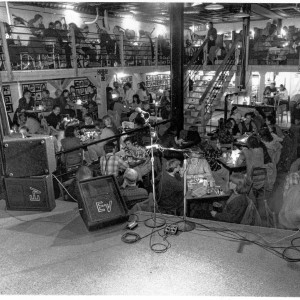 The Iron Horse rides again: The storied Northampton club will reopen at last, May 15
The Iron Horse rides again: The storied Northampton club will reopen at last, May 15 The power of poetry: U.S. Poet Laureate Ada Limón to speak at Smith College
The power of poetry: U.S. Poet Laureate Ada Limón to speak at Smith College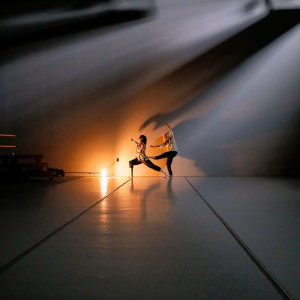 Upon Nancy’s Floor: 33 Hawley event celebrates iconic dancers, history, and a new dance floor
Upon Nancy’s Floor: 33 Hawley event celebrates iconic dancers, history, and a new dance floor
